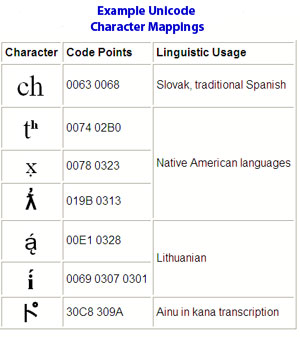Unicode to the Rescue?
 A technology approach to global character printing called Unicode solves many of the issues around international characters sets, says Hugh Gagnier, Sr. Vice President of Business Development and Operations for Zebra Technologies, a manufacturer of thermal printers. A technology approach to global character printing called Unicode solves many of the issues around international characters sets, says Hugh Gagnier, Sr. Vice President of Business Development and Operations for Zebra Technologies, a manufacturer of thermal printers.
“Unicode offers a scalable, flexible approach to globalization that is saving our customers and our distributors a lot of time and money,” Gagnier recently told Supply Chain Digest.
Unicode is a global standard for representing virtually any character in any language – perhaps as many as 100,000 in all. Unicode provides a unique number for every character, no matter what the platform, no matter what the program, no matter what the language. It can be thought of as a global version of the “ASCII” character set used in western languages to represent characters on computers.
So, with a Unicode-compatible printer, Unicode characters are sent to the machine, and it translates the Unicode representations into the appropriate global characters.
So, a company would still use the database approach described above, but would store those translations as Unicode numbers, not images or other ways of dealing with the international characters.
This has a number of advantages. It speeds printing, because the characters are accessed as native fonts in the printer. It makes it easy to print multiple character sets on one label, which was often difficult with traditional approaches. It eliminates the need to download or license specific local fonts, as many companies have done in an attempt to solve the problem. It eliminates the need to do that repeatedly as support is required for new countries/languages. If the printer supports Unicode, it means a company – or reseller – can maintain a single pool of inventory that will work anywhere in the world and support shipping to any country.
“This has been a huge benefit for contract manufacturers like Solectron or Jabil, since they can deploy the same printer anywhere or take on new labeling and shipping requirements very rapidly,” Gagnier said.
The same holds true for printer resellers, which can now maintain a single stock of printers that can be quickly localized, rather than in some cases having different printers that have customized fonts installed. With Unicode, a user or reseller easily activates a specific language set that needs supporting.
Despite all these advantages, the concept of Unicode label printing is still somewhat new, even thought the overall Unicode standard, which has many other uses besides label printing, has been around for some time. (More general information can be found at the Unicode Consortium web site.)
But it is starting to gain traction quickly, fueled by the rapid growth of the global supply chain.
Zebra added full Unicode support to its thermal printers in the last few years, even to some of its small desktop printers, and is starting to see rapid adoption by users and resellers, Gagnier said. In addition, many label design packages are now offering Unicode support as well.
“It’s just a lot better to solve this issue inside the printer than outside the printer,” Gagnier added.
Are you using Unicode for label printing? What are the pros and cons? Are there more companies that should be taking this approach? Let us know your thoughts at the Feedback button below. |